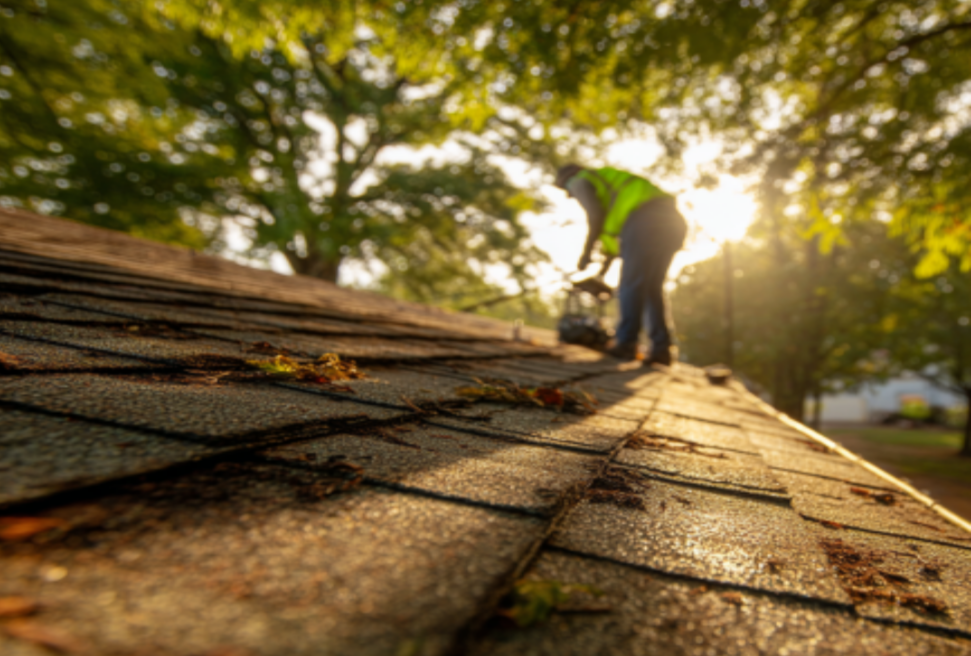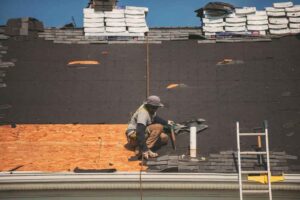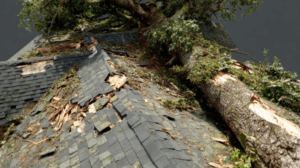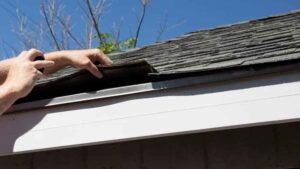Every homeowner knows that roofs don’t last forever—but few realize how quietly they can fail. One season you’re patching a shingle here, a nail pop there, and before you know it, your roof has crossed that invisible line from “still holding up” to “time’s up.”
In the Sandhills of North Carolina, your asphalt shingle roof faces everything from blazing summer heat to frost-tipped winter mornings. That mix of sun, humidity, and cold cycles takes its toll. You don’t always get a dramatic collapse—just subtle clues that your roof is getting tired. And if you catch those signs early, you can plan smart repairs or replacements before leaks, rot, and costly water damage show up.
So, let’s roll up our sleeves and talk about the five biggest warning signs your asphalt shingle roof is nearing end-of-life—and what to do about it before things get ugly.
1. Your Shingles Look Like They’ve Been Through a War
You can tell a lot about your roof’s health by simply looking at the shingles. Over time, they start showing wear just like an old leather jacket—cracked, curled, and missing pieces in all the wrong places.
When shingles start to curl up at the edges or crack along their surfaces, they’re no longer sealing properly. That means every rainstorm is an invitation for moisture to sneak under the surface. Add in a few windy days, and those loose shingles can lift right off, exposing the underlayment and decking beneath.
If you spot bald patches where granules are missing, that’s another red flag. Those gritty little granules aren’t just for show—they’re your roof’s sunscreen. Without them, your shingles bake under UV rays, accelerating the aging process.
What to do:
If more than 20% of your shingles show visible damage—or if you’re constantly patching new spots after every storm—it’s time to talk to a professional like Red Wolf Roofing. A thorough inspection will tell you whether a partial replacement will do the trick or if it’s time for a full roof overhaul.

2. The Roofline Starts to Sag
A sagging roofline is one of the most serious signs your roof’s structure is compromised. Sometimes it’s subtle—a gentle dip that’s easy to miss unless you step back from the house. But that dip can mean your roof decking or underlying supports are waterlogged or weakened.
Moisture trapped over time leads to rot. In the Sandhills’ humid climate, that damage accelerates fast. Once your decking begins to bow or the trusses start to warp, it’s no longer a cosmetic issue—it’s a safety one.
Pro tip: Look at your roof from the street or your backyard. If you notice any unevenness, call in an expert immediately. Red Wolf Roofing can assess structural integrity safely and recommend the next step before things get dangerous—or expensive.
3. You’re Finding Granules Everywhere
If your gutters look like they’ve been dusted with sand, your shingles are shedding their protective layer. Those granules help reflect sunlight and protect against rain, frost, and heat. When they start washing away, it’s usually because the shingles have reached the end of their designed lifespan.
Over time, granule loss leads to brittle shingles that crack and allow moisture in. And with the Sandhills’ temperature swings—hot days, cool nights—expansion and contraction can make that deterioration even worse.
Quick check: During your next gutter cleaning, pay attention to what’s in the debris. If it looks gritty or sandy, that’s your roof crying for help.
4. Your Attic Smells—or Feels—Like Trouble
Most homeowners check their roof from the outside, but the attic tells the real story. Moisture infiltration often starts above your ceiling long before it becomes visible inside your living space.
Head up to the attic with a flashlight and look for:
- Water stains or discoloration on rafters or insulation.
- Damp or musty smells, a sign of mold or mildew growth.
- Daylight peeking through—even a sliver means compromised roofing.
- Matted insulation that’s lost its fluff from water exposure.
When your roof reaches its end of life, it stops doing its job of keeping water out and air flowing properly. Poor ventilation can trap heat and moisture, making your attic feel humid even in cool weather. That’s when rot and mold take over—and those repairs can cost far more than replacing the shingles themselves.
What to do: If you notice any of the above, schedule an inspection right away. A professional roofer can identify whether the issue is localized or a sign that your entire system is aging out.

5. Age—and Time—Are Catching Up with It
Even the best-maintained asphalt shingle roof has a shelf life. Most last between 20 to 25 years, depending on installation quality, materials, and exposure to weather. If your roof is pushing past that mark, it’s time to start planning.
Sure, you can squeeze a few more years out of it with good maintenance—but every extra season increases the risk of hidden leaks, insulation damage, and costly emergency repairs. Think of it like an old truck: at some point, it’s cheaper to replace than to keep patching up.
In the Sandhills, where intense sunlight alternates with damp, cold winters, roofs tend to age faster than they would up north. If you bought your home more than 20 years ago and haven’t had a recent inspection, you might be standing under a ticking clock.
Ask yourself:
- Do I know how old my roof actually is?
- Have I noticed more frequent repairs lately?
- Am I planning to sell my home soon? (Buyers love seeing “new roof” in a listing.)
If you answered “yes” to any of these, it’s worth getting a professional opinion before another storm season hits.
Bonus: Other Red Flags That Sneak Up on You
Not every warning sign comes with a flashing light. Some issues are subtle but still spell trouble:
- Moss or algae streaks: Besides looking bad, they trap moisture that accelerates shingle decay.
- Loose flashing or vents: A small gap can let in water and undermine the roof from within.
- Higher energy bills: An old or damaged roof can mess with insulation, making your HVAC work harder.
- Frequent leaks after rain: Even small leaks point to larger vulnerabilities beneath the surface.
How Red Wolf Roofing Helps Sandhills Homeowners Stay Ahead
Your roof isn’t just shingles—it’s your home’s first line of defense. At Red Wolf Roofing, we believe homeowners deserve more than a quick fix. Our team takes the time to evaluate your roof’s true condition, explain the findings in plain language, and offer solutions that fit your home and budget.
We know the Sandhills. We know how the mix of pine pollen, humidity, and Southern heat can wear down a roof faster than expected. And we know how stressful it can be to face a potential replacement. That’s why our inspections focus on clarity and honesty—not upsells or scare tactics.
When replacement becomes necessary, we walk you through material options, warranties, and maintenance plans designed to help your next roof last as long as possible. And if you’re not quite there yet, we’ll tell you that, too.
Don’t Wait Until It Leaks to Take Action
Your asphalt shingle roof has a lifespan, but catching the warning signs early gives you control over the process—not the weather. Curling shingles, granule loss, sagging sections, attic moisture, or simply age—all are signals it’s time to act.
A proactive roof inspection today could save you thousands tomorrow. If you’re seeing signs that your roof may be nearing the end, don’t wait for the next big storm to find out the hard way.
Contact Red Wolf Roofing in North Carolina today for a professional roof inspection or replacement consultation. With years of experience in the Sandhills region, our experts can give you an honest assessment and a plan to protect your home for years to come.
When it comes to your roof, “good enough” doesn’t cut it. Let Red Wolf Roofing help you keep your home safe, dry, and worry-free—no matter what the Carolina skies decide to throw your way.



